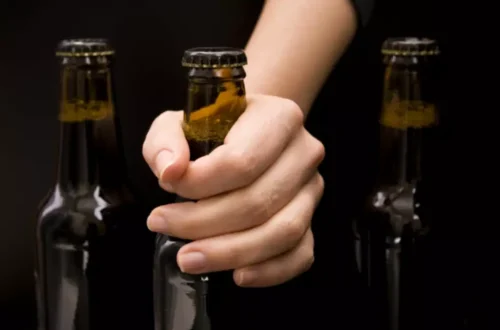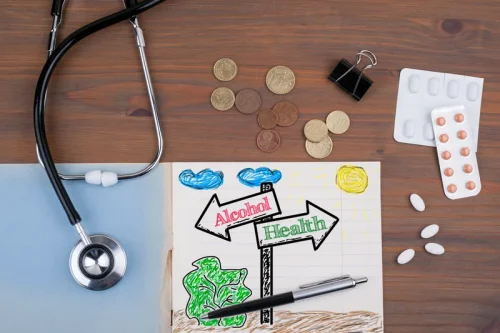
While there is no FDA-approved medication to treat benzodiazepine withdrawal, your doctor may also prescribe other medications to help you manage withdrawal symptoms. The medication Romazicon (flumazenil) is sometimes used off-label for withdrawal symptoms. Benzodiazepine withdrawal can be risky, so it is best to work with a doctor.
Benzodiazepine Withdrawal Timeline
Although I refer to protracted withdrawal as drug neurotoxicity [emphasis added], it is still a bad idea to give the doctor a diagnosis rather than to present symptoms. They want to make the diagnosis and often feel put off by https://ecosoberhouse.com/ patients who present with a complaint and a diagnosis. Although I refer to protracted withdrawal as drug neurotoxicity[emphasis added], it is still a bad idea to give the doctor a diagnosis rather than to present symptoms.

Inpatient treatment
The authors acknowledge the support of the Alliance for Benzodiazepine Best Practices for implementing the discussions that led to the creation of this article. Some supplements, such as valerian and melatonin, might also help you get some relief from your symptoms, but research has found mixed results. Your care team can offer more guidance on safely trying these supplements.
- Benzodiazepine withdrawal syndrome (BZD withdrawal) is the cluster of signs and symptoms that may emerge when a person who has been taking benzodiazepines as prescribed develops a physical dependence on them and then reduces the dose or stops taking them without a safe taper schedule.
- Tapering the drug by slowly reducing the prescription strength may help make withdrawal symptoms much easier to manage.
- When confronted with a patient who has any sort of emotional problem – even if it is a side effect of drugs – the doctors tend to pull out a prescription pad and want to try one drug after the next in hope of being helpful.
- It is also worth mentioning the impact of the COVID-19 pandemic on abuse dynamics overall.
- We conducted an internet survey of current and former benzodiazepine users and asked about their symptoms and adverse life events attributed to benzodiazepine use.
- Dizziness is often reported as being the withdrawal symptom that lasts the longest.
11 Treatment: Modality Combinations
Patients with DTs or other severe withdrawal symptoms may require admission to the intensive care unit due to the risk of mortality. The signs and symptoms of alcohol withdrawal may range from a simple tremor to a fully blown delirium tremens characterized by autonomic hyperactivity, tachypnea, hyperthermia, and diaphoresis. Some patients with alcohol use disorder may also develop seizures which are brief.
- Benzodiazepine abuse and dependence has become more significant among all age groups, from teens to elderly adults.
- Supportive counseling and other targeted therapies or medications may help a person manage the symptoms and improve their quality of life.
- It was approved by the Vanderbilt University Institutional Review Board (IRB) #20052, and did not require written informed consent because it was conducted as an anonymous survey that began with a question which recorded each respondent’s consent for participation.
- A person’s withdrawal symptoms often depend on the half-life of the drug.
- When tapering off benzodiazepines, you’ll always want to work with a trained healthcare professional who can monitor you for side effects and adjust your pace accordingly.
Long-Term Treatment for Benzodiazepine Withdrawal

The best way to quit benzodiazepines is to avoid withdrawal by asking your doctor to taper down your dose. Tapering means taking progressively smaller doses over the course of a few weeks or months. Estimates suggest that 10 to 25% of people who take benzodiazepines for extended periods experience what’s known as protracted withdrawal. Longer-acting benzodiazepines like Klonopin (clonazepam) can stay in the system longer, severe benzodiazepine withdrawal syndrome which means it can be one to two days or even longer before withdrawal symptoms start. If you have been using benzodiazepines for longer than six months, suddenly stopping your dose can cause grand mal seizures and delirium—this is why it’s best to involve your doctor or healthcare professional in your withdrawal process. When you are physically dependent on a drug, it means your body can’t operate normally without it.
- This can involve living at a detox facility or hospital for several weeks, where you can receive constant medical monitoring and psychological support.
- Many of these benzodiazepine users are at elevated risk for BIND, which may go undiagnosed.
- That’s what makes it essential to stop taking benzodiazepines slowly, with support from a medical professional.
The findings of a large survey support the FDA’s “boxed warning” from 2020.
Tapering can help take the edge off withdrawal symptoms like tremors and nausea, though it may not prevent withdrawal symptoms entirely. Long-term treatment after benzodiazepine withdrawal will depend on your reasons for taking them in the first place and your reasons for quitting. If you have a psychiatric condition that was managed by the benzodiazepines, you will need an alternative plan to manage your condition. There is a risk that people who quit benzodiazepines without a taper may experience a life-threatening grand mal seizure. If you go into withdrawal without tapering, you also risk experiencing delirium and hallucinations that cause you to lose touch with reality—a terrifying and dangerous experience.
Patient Accounts
Other features of chronic alcohol use disorder include ascites, hepatosplenomegaly, and melena. Thinning of hair, spider angioma, and gynecomastia are all also seen in patients with chronic alcohol use disorder. Tapering the drug by slowly reducing the prescription strength may help make withdrawal symptoms much easier to manage. Additionally, medical supervision allows doctors to respond much more quickly to potential side effects and withdrawal symptoms. Research in the British Journal of Clinical Pharmacology notes that an estimated 10–25% of people who use benzos for extended periods experience withdrawal symptoms that last for 12 months or longer. A person’s withdrawal symptoms often depend on the half-life of the drug.




0 Comment